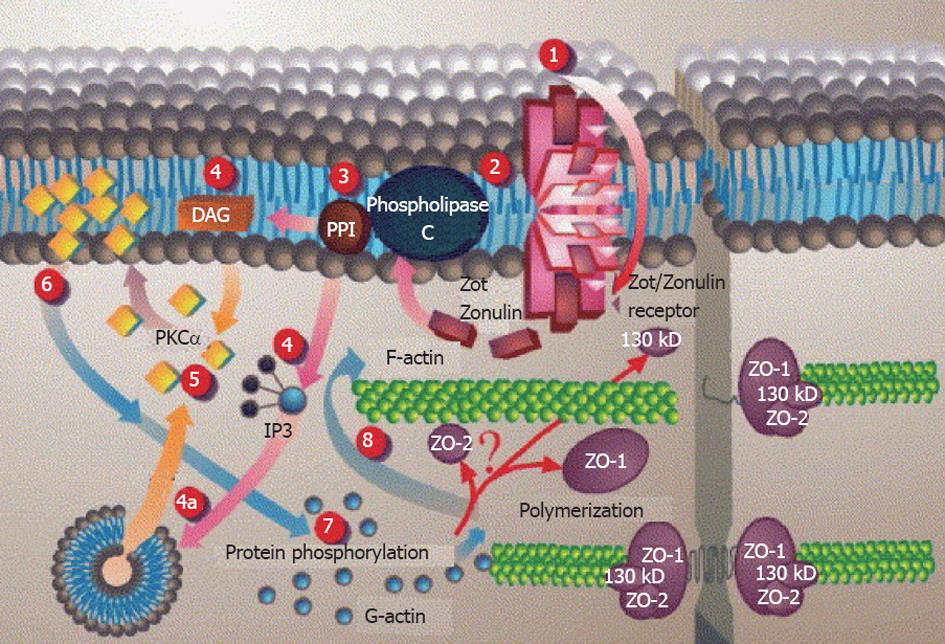Copyright
©2012 Baishideng Publishing Group Co.
World J Gastroenterol. Nov 14, 2012; 18(42): 6036-6059
Published online Nov 14, 2012. doi: 10.3748/wjg.v18.i42.6036
Published online Nov 14, 2012. doi: 10.3748/wjg.v18.i42.6036
Figure 5 Proposed Zot intracellular signal mediated opening of intestinal tight junctions[146] (printed with permission).
1: Zot interacts with a specific Zot/Zonulin intestinal surface receptor; 2: Leading to protein internalization; 3: Activation of phospholipase C; 4: Hydrolyzes phosphatidyl inositol to release inositol 1,4,5-tris phosphate (PPI-3) and diacylglycerol (DAG), either via DAG or (4a) through the release of intracellular Ca2+via PPI-3; 5: Protein kinase C alpha (PKCα) is then activated; 6: Membrane-associated, activated PKCα catalyzes the phosphorylation of target protein(s); 7: With subsequent polymerization of soluble G-actin in F-actin; 8: This polymerization causes the rearrangement of the tight junctions (TJ) filaments and displacement of proteins [including zonula occludens-1 (ZO-1)]. As a result, intestinal TJ becomes loosened. IP3: Inositol trisphosphate.
- Citation: Gujral N, Freeman HJ, Thomson AB. Celiac disease: Prevalence, diagnosis, pathogenesis and treatment. World J Gastroenterol 2012; 18(42): 6036-6059
- URL: https://www.wjgnet.com/1007-9327/full/v18/i42/6036.htm
- DOI: https://dx.doi.org/10.3748/wjg.v18.i42.6036









